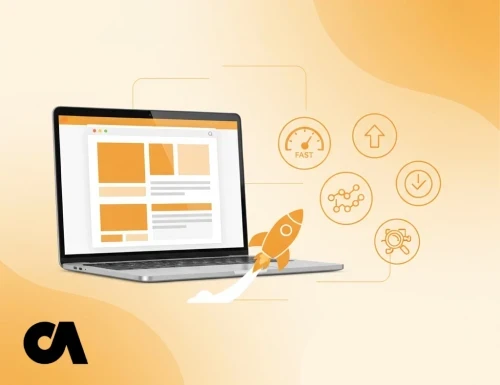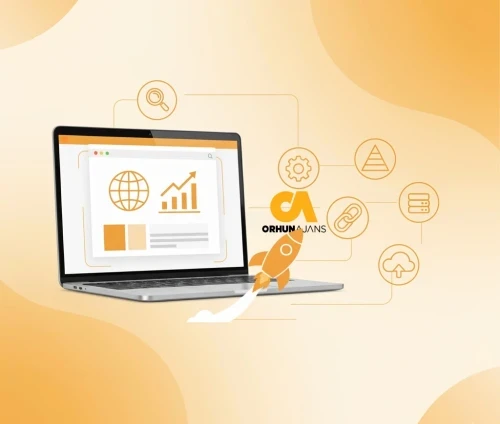Factors Affecting Website Cost: Comprehensive Planning Guide
When planning a website project, understanding budget management and cost factors is critically important for a successful investment. Each project's unique requirements involve numerous factors that directly affect cost. In this guide, we'll examine 10 critical factors that determine website cost in detail and help you make informed decisions.
Website Types and Scope Differences
Every website project has different requirements. Your cost structure varies completely based on your project type:
- Corporate Website: Company information, services, references, and contact
- E-Commerce Site: Product management, payment systems, shipping integrations
- Enterprise Portal/Platform: Complex business processes, user management, API integrations
- Simple Landing Page: Basic information and communication focused
- Blog/Content Platform: Content management and publishing systems
1. Design Quality and Originality Level
Your design approach is one of the most important cost determinants of your project. There are significant resource differences between theme adaptation and custom design from scratch.
Design Level Characteristics:
- Theme Adaptation: Quick start, limited customization capability
- Semi-Custom Design: Template-based but brand-specific adjustments
- Fully Custom Design: Brand identity specific, unique user experience
Professional UI/UX design, user experience research, usability testing, and prototyping processes expand the project scope but are fundamental for long-term success.
2. Page Count and Content Architecture
The structural complexity of your website directly affects the development process. There's a significant difference between a simple five-page site and a comprehensive fifty-page catalog site.
Your content management strategy is also an important factor:
- Ready-made content provided by the client
- Professional content created by the agency
- Professional copywriting and editorial services
- Product photography and visual production
- Video production and multimedia content
3. Functionality and Custom Features
Features to be integrated into your website are the most variable component of project scope. Transitioning from basic features to advanced functionality exponentially increases resource requirements.
Basic Features:
- Contact form and email integration
- Responsive (mobile-friendly) design structure
- Basic SEO infrastructure and optimization
- Social media platform integration
- Google Maps location integration
- Basic analytics tool setup
Advanced Features:
- E-Commerce Modules: Product management, cart system, payment gateways, inventory tracking
- Membership and User Management: Registration, login, profile, authorization systems
- Multi-Language Support: Content management and localization for 2-10 languages
- AI Integrations: Chatbot, recommendation engines, personalization
- CRM Systems: Customer relationship management integrations
- Custom API Development: Data exchange with third-party systems
- Booking Systems: Appointment, hotel, event reservations
4. E-Commerce Requirements and Complexity
E-commerce sites require much more complex infrastructure than standard corporate websites. Critical components for a successful online sales platform:
E-Commerce Basic Requirements:
- Product catalog management (variants, inventory, pricing)
- Multiple payment method integrations
- Shipping company integrations and tracking systems
- Automatic invoice and e-archive systems
- Customer account management and order history
- Return and exchange process management
Advanced E-Commerce Features:
- B2B modules (wholesale, dealer panels, custom pricing)
- Advanced product filtering and search algorithms
- Intelligent product recommendation engines
- Subscription and recurring payment systems
- Multi-vendor marketplace infrastructure
- Inventory management and ERP integration
- Dynamic pricing and campaign management
5. Mobile Solutions and Multi-Platform Support
In the modern digital world, your website must work perfectly on all devices. Your mobile strategy is an important factor determining project scope:
Mobile Solution Options:
- Responsive Web Design: Automatic adaptation to all screen sizes
- Mobile-First Approach: Mobile first, then desktop design
- Progressive Web App (PWA): App-like experience, offline functionality
- Native Mobile Apps: Separate native development for iOS and Android
- Hybrid Apps: Multi-platform support with single codebase
PWA technology creates a more efficient alternative while offering app-like experience. Features like offline functionality, push notifications, home screen installation, and fast loading meet modern user expectations.
6. Security Layers and Data Protection
Website security is critically important, especially for e-commerce and systems processing personal data:
Basic Security Requirements:
- SSL/TLS Certificate: Data encryption and secure connection
- Web Application Firewall (WAF): Protection against malicious traffic and attacks
- DDoS Protection: Measures against denial of service attacks
- Regular Security Scans: Vulnerability detection and preventive measures
- Automatic Backup Systems: Protection against data loss risk
Advanced Security:
- Two-factor authentication (2FA)
- GDPR/Privacy compliance infrastructure
- PCI-DSS certification (for credit card transactions)
- Penetration testing and security audits
- Data masking and anonymization
7. Hosting Infrastructure and Server Technology
The infrastructure where your website will be hosted is one of the critical decisions for both performance and scalability:
Hosting Solutions:
- Shared Hosting: Economical solution for small and medium-sized sites
- VPS (Virtual Private Server): Dedicated resources and better performance
- Cloud Hosting: Scalable, flexible, and high availability
- Dedicated Server: Full control and maximum performance
- Managed Hosting: Hosting solutions including technical management
Performance Optimization Tools:
- CDN (Content Delivery Network): Global speed optimization
- Caching Systems: Page load speed optimization
- Load Balancer: Traffic distribution and high availability
- Database Optimization: Query acceleration and indexing
8. SEO and Digital Marketing Infrastructure
An invisible website, no matter how high quality, cannot reach its goal. SEO optimization ensures your site succeeds in search engines from the start:
Technical SEO Requirements:
- Search engine friendly URL structure
- XML sitemap and robots.txt optimization
- Structured data markup (Schema Markup)
- Page speed optimization (Core Web Vitals)
- Mobile compatibility and mobile-first indexing
- Canonical URL and duplicate content management
On-Page SEO Strategies:
- Keyword research and content planning
- Meta tag (title, description) optimization
- H1, H2, H3 heading hierarchy
- Internal linking strategy
- Image optimization (alt text, file size)
- User experience signals
Analytics and Tracking Systems:
- Google Analytics integration and advanced tracking
- Google Search Console setup
- Conversion tracking systems
- Heatmap and user behavior analysis
- A/B testing infrastructure
9. Maintenance, Updates, and Continuity Planning
Website launch is the beginning of the process. Regular maintenance and update strategy is essential for sustainable success:
Technical Maintenance Requirements:
- Security patches and updates
- Software and platform version updates
- Plugin and theme updates
- Database optimization and cleaning
- Performance monitoring and improvement
- Regular backups and disaster recovery plan
Content and Operational Maintenance:
- Content updates and new page additions
- Product/service information updates
- Adding blog posts and news
- Image updates and optimization
- Improvements based on user feedback
Technical Support Scope:
- 24/7 system monitoring and uptime guarantee
- Error detection and emergency response
- Technical consulting and user training
- SLA (Service Level Agreement) guarantees
- Performance reporting and analysis
10. Agency Experience and Project Management
The competence, technology stack, and project management approach of the agency you work with directly affects your project's success:
Agency Evaluation Criteria:
- Portfolio and References: Experience and success stories in similar projects
- Technical Expertise: Technologies used and development standards
- Team Structure: Coordination of designers, developers, project managers, SEO specialists
- Project Methodology: Approaches like Agile, Scrum, Waterfall
- Communication Process: Regular reporting, transparency, accessibility
Project Delivery Process:
- Detailed discovery and analysis phase
- Wireframe and prototyping
- Design approval processes
- Iterative development and testing phases
- User acceptance testing (UAT)
- Training and documentation
- Post-launch support
Hidden Cost Items and Unexpected Expenses
Additional requirements often overlooked in website projects:
- Domain Management: Domain registration and annual renewal
- Premium Licenses: Theme, plugin, software license fees
- Visual Content Licenses: Stock photos, videos, icon sets
- Email Services: Professional email hosting and security
- Legal Compliance: Privacy policies, cookie consent systems
- Revision Rights: Change requests outside contract scope
- Emergency Response: Technical support outside maintenance hours
- Third-Party Integrations: API usage fees
Proper Budget Planning Strategy
When determining your website budget, evaluate these factors:
Strategic Questions:
- What role does the website play in my business strategy?
- How are my competitors positioned digitally?
- What business results do I expect from the site?
- What features do I absolutely need, and what can I compromise on?
- What is my long-term digital transformation strategy?
- Are internal resources or outsourcing more sensible?
Phased Investment Approach:
Instead of implementing all features at the start, an MVP (Minimum Viable Product) approach starting with basic functionality and expanding based on user feedback can be cost-effective:
- Phase 1: Basic website and critical features
- Phase 2: Improvements after user feedback
- Phase 3: Advanced features and integrations
- Phase 4: Scaling and optimization
2025 Technology Trends and Future-Focused Investment
Current technological developments add new dimensions to website projects:
Artificial Intelligence and Automation:
- AI-powered chatbots and virtual assistants
- Personalized content recommendations
- Automatic content generation and optimization
- Visual recognition and search features
- Voice search optimization
Modern Web Technologies:
- Headless CMS: Separation of content and presentation layers
- JAMstack Architecture: Fast, secure, and scalable web applications
- Serverless Technologies: Dynamic scaling and efficiency
- WebAssembly: High-performance web applications
User Experience Innovations:
- Micro-interactions and animations
- Dark mode and theme customization
- Voice command integration
- AR/VR experiences (especially for e-commerce)
- Full compliance with accessibility (WCAG) standards
Sustainability and Green Technology:
- Green hosting and carbon-neutral infrastructure
- Optimized code and low energy consumption
- Lightweight themes and minimal design approaches
- Image optimization and lazy loading
ROI (Return on Investment) and Success Metrics
Metrics to track for measuring your website investment success:
Traffic Metrics:
- Organic search traffic growth
- Direct and referral traffic
- Page views and session duration
- Bounce rate
Conversion Metrics:
- Lead generation
- Form submissions and contact requests
- E-commerce conversion rates
- Average order value
- Customer acquisition cost (CAC)
Engagement Metrics:
- Average time per page
- Social media shares
- Newsletter subscriptions
- Repeat visit rates
Conclusion: Strategic Investment Perspective
Website development is not a one-time expense but a strategic investment in your digital asset. A successful website project:
- Is a digital team member representing your business 24/7
- Strengthens your brand authority and credibility
- Automates customer acquisition and sales processes
- Creates a solid foundation for scalable growth
- Provides competitive advantage and distinguishes you in the industry
- Enables data-driven decision making
With proper planning, an experienced agency partnership, and clear goals, your website investment pays for itself quickly and begins adding sustainable value to your business.
Critical Reminder: Rather than deciding on the lowest quote, prioritize long-term value and quality. A professional website is a strategic asset that serves your business for years.
If you want detailed analysis, customized solution recommendations, and professional consulting for your website project, you can contact us. We're with you on your digital transformation journey.



